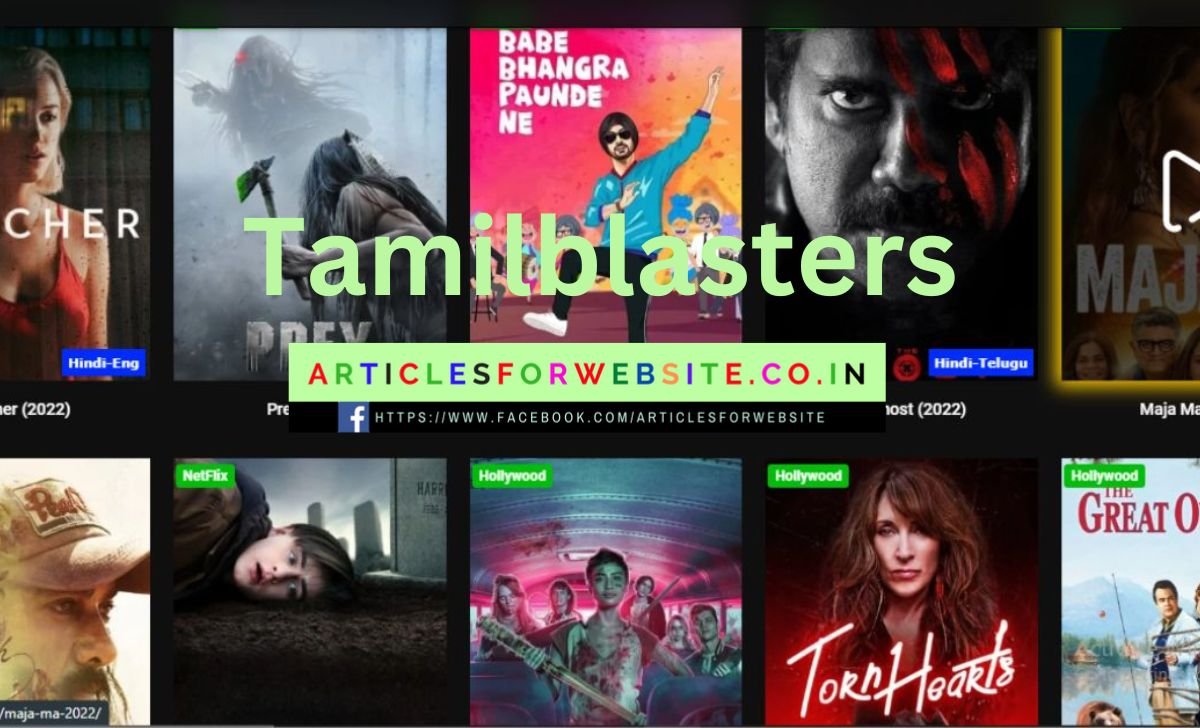Tamilblasters: What You Need To Know - Latest Updates & Info
Is the allure of instant entertainment truly worth the potential risks? The proliferation of websites like Tamilblasters, promising free access to the latest movies and series, poses significant challenges to the entertainment industry and raises ethical questions for consumers.
The digital age has revolutionized how we consume content, with streaming services and on-demand platforms becoming increasingly prevalent. However, alongside these legitimate avenues, a darker side has emerged: the world of online piracy. Websites such as Tamilblasters have capitalized on this trend, offering unauthorized access to copyrighted material, including movies, television shows, and web series, often before their official release or at a fraction of the cost. This practice, while tempting for some, carries serious implications for the creators, distributors, and the very fabric of the entertainment ecosystem. The rise of these platforms reveals the evolving dynamics of content consumption in the digital realm, highlighting the ongoing battle between accessibility and intellectual property rights. The appeal of these websites hinges on the desire for immediate gratification and cost savings, but the consequences of engaging with them extend far beyond the individual user. The discussion should not only consider the mechanics of piracy but also the motivations and behaviors of its consumers.
Tamilblasters, in its various iterations, has gained notoriety as a prominent player in the illicit distribution of pirated movies. Its core function is to provide access to a vast library of films and series from multiple languages, including Tamil, Telugu, Malayalam, Hindi, and even Hollywood productions dubbed in regional languages. This extensive catalog, ranging from recent blockbusters to classic titles, is a key factor in attracting users. The site's appeal is amplified by its accessibility; offering easy access to new releases, often shortly after their theatrical debut, as well as older Tamil classics, which caters to a diverse audience seeking convenience and a wide selection. The user experience is often designed to be straightforward, facilitating quick downloads and streaming, which further fuels its popularity among those seeking effortless entertainment. This ease of use combined with the wide selection has solidified its position within the digital piracy ecosystem.
However, the ease of access comes with a significant caveat. Tamilblasters and similar websites operate outside the bounds of legal distribution, distributing copyrighted material without authorization. This activity is not only illegal but also detrimental to the creators, distributors, and the entire entertainment industry. The economic impact of piracy is substantial, leading to lost revenue for filmmakers, studios, and everyone involved in the production and distribution of films. This, in turn, can stifle creativity, reduce investment in new projects, and negatively affect the quality and diversity of content available to the public. Beyond the financial implications, there are also legal risks for those who download or stream content from such sources. Users could face penalties for copyright infringement, including fines and other legal actions, as the issue of copyright continues to evolve in the digital era. The reliance on illegal platforms has also raised concerns about security. Many such sites are known to be filled with malware and viruses, exposing users to potential cyber threats like identity theft and data breaches. As the digital landscape becomes increasingly complex, the need for awareness around the risks associated with piracy is more crucial than ever.
The origins and growth of Tamilblasters are shrouded in the anonymity characteristic of the digital piracy underworld. It is difficult to pinpoint exact dates and the initial individuals behind the sites launch, however, the platforms development follows the general trajectory of similar illegal movie distribution platforms. These sites often emerge in response to the increasing demand for readily accessible content and the technological advancements that facilitate online file sharing and streaming. Initially, the website probably started as a simple file-sharing portal. Over time, it has probably expanded, integrating search functions, advertising revenue streams, and mirroring sites to circumvent blocks. The site gained traction by capitalizing on the growing digital audience and the limitations of legitimate content distribution, especially in regions where access to streaming services or theatrical releases was limited. The lack of regulatory oversight and global reach further contributed to the platforms ability to operate freely. However, as it became a popular destination for pirated content, the site also became the target of takedown notices, legal actions, and cyber attacks. As authorities and copyright holders work to combat piracy, platforms such as Tamilblasters are constantly forced to adapt. This cat-and-mouse game between illegal operators and those seeking to protect intellectual property defines the ongoing evolution of digital piracy.
To sustain operations, Tamilblasters utilizes various strategies, including the use of proxy servers and mirror sites. When the original domain is blocked or taken down by authorities, these proxies and mirror sites allow users to access the content through alternative URLs. This practice complicates efforts to shut down the site completely and makes it more difficult to regulate and control its distribution. The operators of such sites are constantly seeking to evade detection and maintain access for their users. These proxies often appear in different forms. The platform can also use VPNs (Virtual Private Networks) to mask its server location. These techniques have become standard tactics in the digital piracy landscape. This continual adaptation highlights the persistence of illegal content distribution and the challenges faced by copyright holders in the battle to protect their intellectual property.
Tamilblasters' business model, like that of many piracy sites, relies heavily on advertising revenue. The website displays numerous ads, often from questionable sources, to generate income. The revenue generated can support the site's operations, including server costs, domain registration, and the salaries of individuals who manage the platform. The type of advertising used often reflects the sites nature and audience, with ads for adult content, gambling, and other potentially harmful products being common. This revenue model encourages the sites operators to attract as many visitors as possible, leading to the constant drive to provide fresh content. This dependence on advertising links the sites financial stability to its ability to maintain a steady stream of users who, in turn, are exposed to potential security threats and other harmful content. This business model makes Tamilblasters a part of a complex and often problematic ecosystem. The financial aspects of these operations are crucial for understanding the full impact of digital piracy and the incentives behind its perpetuation.
The reach of Tamilblasters extends beyond the Tamil-speaking community. The platform offers content in several Indian languages, including Telugu, Malayalam, and Hindi, as well as English and other international languages. This multilingual approach broadens its user base significantly. The appeal is also increased by the inclusion of content from diverse genres, including action, romance, comedy, thrillers, and dramas. The availability of a broad range of movies, web series, and television shows, catering to different tastes and preferences, adds to the allure of the site. This vast collection, coupled with the ease of access, positions Tamilblasters as a hub for a wide variety of entertainment seekers. This broad reach also reveals the global nature of digital piracy, as content creators and distributors struggle to control the illegal distribution of their works across borders and languages. The sites diverse offerings play a crucial role in its ongoing popularity and impact on content consumption habits.
The implications of platforms like Tamilblasters are multifaceted. While the immediate appeal is the ability to access content without paying, the larger consequences affect the entire entertainment ecosystem. The availability of pirated movies undermines the financial stability of the film industry, potentially leading to decreased investment in new projects, lower quality content, and job losses for professionals. The impact also extends to smaller independent filmmakers and distributors who often rely on legitimate revenue streams to finance their projects. Furthermore, the prevalence of piracy can lead to a decline in the overall quality of content, as filmmakers may be less willing to take creative risks. From an ethical perspective, the use of pirated content raises questions about respect for intellectual property and the value placed on creative work. The accessibility and affordability of content through platforms like Tamilblasters come at the cost of undermining the rights of creators and the integrity of the entertainment industry.
Accessing Tamilblasters, or any similar website, requires users to navigate a complex environment of potential risks. The primary concern is the legal ramifications of copyright infringement. Downloading or streaming copyrighted material without authorization is a violation of intellectual property rights and may lead to legal penalties. These penalties vary depending on the jurisdiction but can include fines, lawsuits, and other legal actions. Aside from the legal risks, users are also exposed to significant cybersecurity threats. Many websites that host pirated content are known to contain malware, viruses, and other malicious software that can infect devices, leading to data breaches, identity theft, and damage to hardware. The use of these sites can also expose users to unwanted advertising and potentially harmful content. In addition, it is important to consider the ethical implications of using these platforms and the impact on the creators and distributors of the content.
The efforts to combat Tamilblasters and similar piracy platforms involve a multifaceted approach. Copyright holders and industry organizations actively pursue legal actions against the operators of these sites, seeking to shut them down and prosecute those responsible. Technology companies also play a role, developing and implementing content filtering tools that can identify and block copyrighted material. Regulatory bodies and government agencies are also working to enforce copyright laws and create stricter rules to prevent piracy. Additionally, there are ongoing efforts to raise awareness among consumers about the risks of piracy and to promote the use of legitimate content streaming services. The fight against piracy is a continuous process, requiring collaboration between various stakeholders, including copyright holders, technology companies, and regulatory authorities, to adapt to new technologies and emerging challenges.
For those who wish to enjoy entertainment legally, numerous alternatives exist. Subscription-based streaming services such as Netflix, Amazon Prime Video, Disney+, and others offer extensive libraries of movies, television shows, and web series at a reasonable cost. These services provide high-quality content, with new releases and original programming available. Purchasing or renting digital copies of movies and shows through platforms like the iTunes Store, Google Play Movies, or Amazon Prime Video is another option. This allows viewers to enjoy content while supporting creators and distributors. The availability of these legitimate choices offers consumers access to entertainment in a safe and legal manner, with new and innovative streaming and viewing experiences being introduced continuously. The growth of these platforms reflects the consumer demand for easily accessible, high-quality content. The existence of these services demonstrates that enjoying entertainment does not need to come at the cost of illegal activities.
The long-term implications of the digital piracy landscape, including websites such as Tamilblasters, are significant. The ongoing battle between copyright holders and those who distribute pirated content will continue to shape the future of the entertainment industry. As new technologies emerge, such as artificial intelligence, virtual reality, and decentralized platforms, the methods of content creation, distribution, and consumption will evolve. The legal and regulatory frameworks governing copyright and intellectual property rights will continue to be updated, attempting to keep pace with these rapid technological advancements. The balance between providing consumers with access to content and protecting the rights of creators and distributors will be a key challenge. The choices that users make regarding the sources of their entertainment, whether legitimate or illegal, will continue to influence this dynamic. The actions taken to combat piracy today will define the entertainment landscape for future generations.

Exploring The World Of Tamilblasters.ac Your Gateway To Tamil Cinema

Tamilblasters 2023 Tamil HD Movies Download Tamilblasters

TamilBlasters The Ultimate Guide To Tamil Movie Downloads